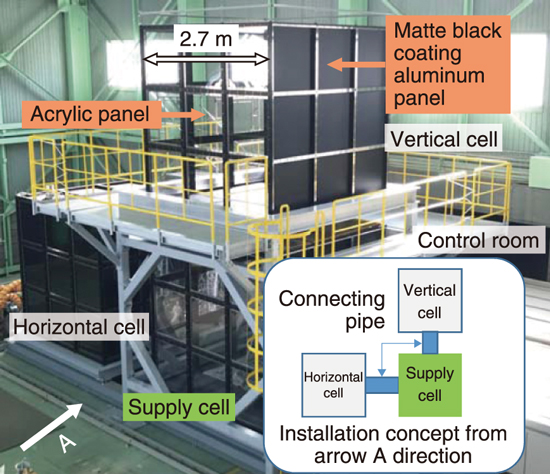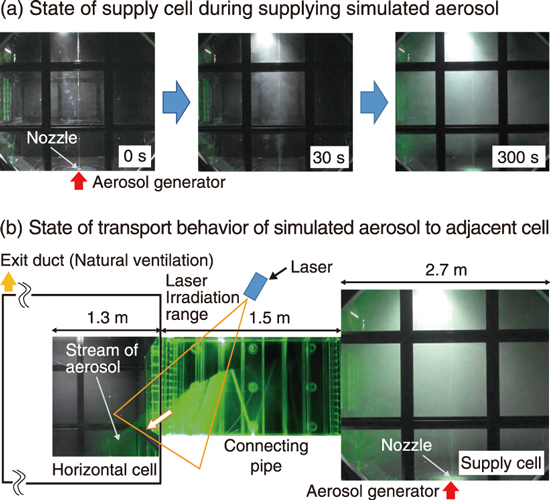
Fig.7-5 Multiple cells with expandable connecting pipe test (MET) facility

Fig.7-6 Typical results of the visualization test for aerosol transport
In fast reactors, sodium is used as a coolant with excellent coolability. However, sodium is chemically active and reacts with air, subsequently leading to combustion (i.e., sodium fire) in the event of sodium leakage. The transport of the aerosol (sodium oxide) generated by a sodium fire through the air duct between cells may have harmful effects on the human body and may damage and cause failure of the control devices. Previously, many experimental studies on sodium fires were conducted in single cell. Findings based on sodium fire experiments using multiple cells are quite limited.
Thus, multiple cells with expandable connecting pipe test (MET) facility (Fig.7-5) was developed to understand the basic aerosol behavior between cells. The MET facility comprises three cells and acrylic tubes of different shapes as the connecting pipes. The cells are designed as cubes with each side 2.7 m long based on the natural convection condition of sodium fires, and the walls of each cell are made of acrylic and with matte black coating aluminum panels to suppress the reflection of light for optical measurement with a camera and laser. Besides, each panel has easily removable structures for flexible cell arrangement and for setting the arbitrary equivalent cross-sectional area of the connecting pipe to understand the influence of these parameters. In this test, instead of performing an actual sodium fire experiment, fine silica particles were used to simulate the primary particle size and density of sodium fire aerosol. The particle was supplied from the bottom of the supply cell by an aerosol generator, which is capable of blowing the particles upward by means of a brush and compressed air.
Fig.7-6 shows the results obtained using the horizontally arranged test apparatus. The aerosol transport behavior was observed by a camera, and clearer images of the connecting pipe were obtained by laser irradiation. In addition, this test was conducted under the basic conditions of opening the exhaust duct in the horizontal cell and equalizing the pressure in the system. Fig.7-6(a) shows the aerosol transport behavior in the supply cell. With time, the aerosol was transported upward and filled the top of the cell. With further time, the aerosol stream passed through the connecting pipe to the horizontal cell (Fig.7-6(b)). The same aerosol filling process was observed in the vertically arranged test apparatus. Moreover, the mass of the aerosol settled on the floor of each cell was measured after performing the test to support the obtained image, thereby enabling the planar distribution evaluation of aerosol sedimentation in each cell.
The above results show that the basic aerosol transport behavior to the adjacent cells was confirmed by using the MET facility. This result is expected to be helpful to elucidate the transport behavior of sodium fire aerosols for validating the evaluation method in the future.
This research is a part of the achievements of “Research and Development of Multi-Level and Multi-Scenario Plant Simulation Systems for Innovative Sodium-Cooled Fast Reactor” commissioned by MEXT.
(Ryota Umeda)